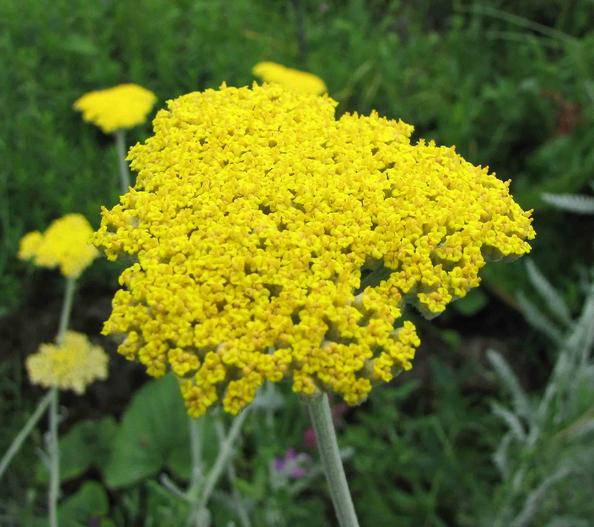Siberian Yarrow
(Achillea clypeolata)
Siberian Yarrow (Achillea clypeolata)
/
/

阿橋花譜 HQ Flower Guide
CC BY-SA 2.0
Image By:
阿橋花譜 HQ Flower Guide
Recorded By:
Copyright:
CC BY-SA 2.0
Copyright Notice:
Photo by: 阿橋花譜 HQ Flower Guide | License Type: CC BY-SA 2.0 | License URL: https://creativecommons.org/licenses/by-sa/2.0/ | Uploader: 阿橋 KHQ | Publisher: Flickr
































Estimated Native Range
Summary
Achillea clypeolata, commonly known as Siberian yarrow or Shieldleaf yarrow, is a perennial herb that is deciduous or semi-deciduous depending on the climate. It is native to meadows, grasslands, and open areas in Eastern Europe and Western Asia. This species typically grows to a height of 1-2.5 feet (0.3-0.8 meters) and a width of 1-2 feet (0.3-0.6 meters). The plant has a clumping form and bears flat-topped clusters of small, bright yellow flowers in the summer, which are moderately showy and attract pollinators. The foliage is green and somewhat fern-like, adding texture to garden settings.
Siberian yarrow is valued for its drought tolerance and ability to thrive in poor soils, making it a low-maintenance choice for gardeners. It is often used in borders, rock gardens, and as a ground cover. Additionally, it has a long history of use in traditional medicine. For optimal growth, it requires full sun to part shade and well-drained soils, including clay, loam, or sandy types. While it is generally pest and disease resistant, overwatering or poor drainage can lead to root rot. It is also important to note that Achillea species can spread aggressively by rhizomes and self-seeding, potentially becoming invasive in some areas.CC BY-SA 4.0
Siberian yarrow is valued for its drought tolerance and ability to thrive in poor soils, making it a low-maintenance choice for gardeners. It is often used in borders, rock gardens, and as a ground cover. Additionally, it has a long history of use in traditional medicine. For optimal growth, it requires full sun to part shade and well-drained soils, including clay, loam, or sandy types. While it is generally pest and disease resistant, overwatering or poor drainage can lead to root rot. It is also important to note that Achillea species can spread aggressively by rhizomes and self-seeding, potentially becoming invasive in some areas.CC BY-SA 4.0
Plant Description
- Plant Type: Herb
- Height: 1-2.5 feet
- Width: 1-2 feet
- Growth Rate: Moderate
- Flower Color: Yellow
- Flowering Season: Spring, Summer
- Leaf Retention: Deciduous
Growth Requirements
- Sun: Full Sun, Part Shade
- Water: Low, Medium
- Drainage: Fast, Medium
Common Uses
Border Plant, Butterfly Garden, Deer Resistant, Drought Tolerant, Groundcover, Low Maintenance, Rabbit Resistant, Street Planting
Natural Habitat
Meadows, grasslands, and open areas in Eastern Europe and Western Asia
Other Names
Common Names: Shieldleaf yarrow
Scientific Names: , Achillea clypeolata, Achillea alexandrae-borzae, Achillea borzana, Achillea compacta, Achillea glomerata, Achillea sericea, Achillea tomentosa, Achillea tomentosa, Achillea velutina
GBIF Accepted Name: